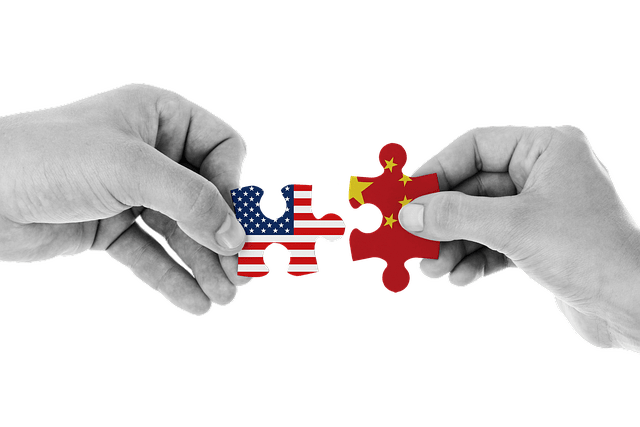China-US relations Trade negotiations are key to getting back on track
Recently, foreign media are generally concerned that the rising US agricultural exports to China will boost US agriculture and believe that China’s import of soybeans from the US to a new high bodes well for the realization of the first phase of the trade agreement. Practical professionals in the industry are already considering how to better repair and push Sino-US relations back on track, and are trying to find a breakthrough. Industry insiders say that trade and industry can provide impetus to repair Sino-US relations.
The South China Morning Post reported on the 5th that Ge Guorui, chairman of the American Chamber of Commerce in China, said that in essence, trade negotiating groups between China and the United States often communicate effectively. Since the signing of the first phase of the trade agreement between China and the United States, the trade negotiating teams of the two countries have been in regular contact and have taken their negotiations “very seriously and diligently”. No matter who wins the general election, the conversation will continue and it is possible to restart negotiations on the long-awaited bilateral investment agreement. The first phase agreement may be a starting point. Only when the first phase progresses smoothly and is successful, will there be opportunities to negotiate other difficult issues, such as subsidies for Chinese state-owned enterprises, intellectual property protection, technology transfer and market access.
Reuters reported on the 5th that in recent months, China has strongly returned to the U.S. soybean market, pushing U.S. agricultural exports to China to a new high. A large number of transportation plans bode well for the realization of the commitments in the first phase of the trade agreement between the two countries. Data released by the U.S. Census Bureau on the 4th showed that the U.S. exported 3.13 billion US dollars worth of agricultural products and related products to China in September, the highest record since November 2017. Without the surge in soybean shipments, these records would be impossible.

From January to July this year, the total amount of soybean exports from the United States to China hit a 16-year low, which severely hindered China from fulfilling the first phase of the agreement. However, after the pace of purchases accelerated, approximately 7.5 million tons of US soybeans were shipped to China in August and September, nearly 70% higher than the record for the same period. Pork and pork products have promoted overall exports of American farms to China by a greater degree than ever before. The financial blog ZeroHedge tweeted that due to the soaring demand in China, soybean futures prices hit a four-year high.
Concerned about the rise in exports of agricultural products to China to boost the US agriculture The Wall Street Journal reported on the 4th that according to estimates by the US government, in recent months, China has increased its purchases of US grains and meat in accordance with the trade agreement reached at the beginning of this year, which is driving a surge in US agricultural exports. Greg Heckman, CEO of grain giant Bunge, said that driven by rising demand, the company’s soybean processing plant has set a record operating speed in recent months, producing large quantities of feed ingredients for Chinese pig farmers. After severely reducing China’s pork supply, local pig farmers are also stepping up to rebuild China’s pork supply.
According to reports from the U.S. Department of Agriculture and the Office of the Trade Representative, after the signing of the trade agreement, so far, the purchase orders of Chinese buyers for U.S. agricultural products have reached 23.6 billion U.S. dollars.
US Consumer News and Business Channel CNBC reported on the 4th that Kailin Raslan, founder of political risk consulting firm KRA Group, said that the United States is important in geopolitics, but in terms of business in Southeast Asia, China is obviously more important than the United States. Much. He said: “Southeast Asian countries have experienced a huge boom in bilateral trade with China. As far as business is concerned, what they really value is China.” Raslan said, “I think what we must keep in mind is that people are The perception of influence has greatly diminished.”



